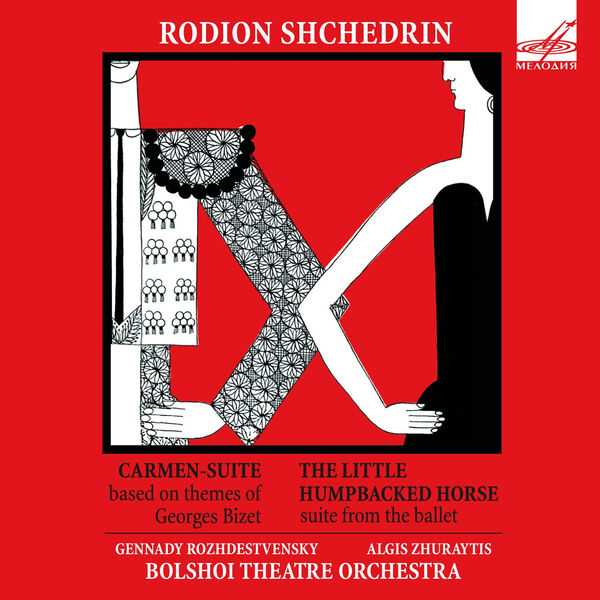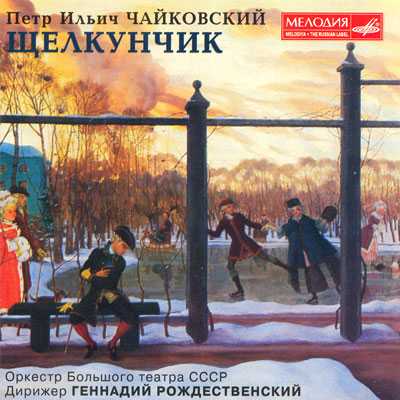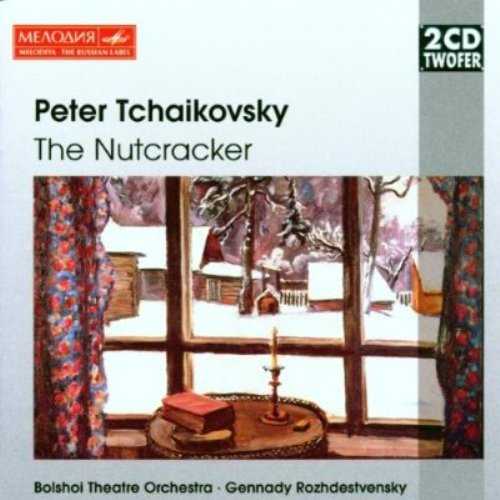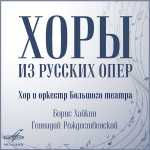
Composer: Rodion Shchedrin
Orchestra: Bolshoi Theatre Orchestra
Conductor: Algis Zhuraytis, Gennady Rozhdestvensky
Format: FLAC (tracks)
Label: Melodiya
Catalogue: MEL CD 1001630
Release: 1967, 1963 / 2009
Size: 369 MB
Recovery: +3%
Scan: cover
Carmen Suite
01. I. Introduction
02. II. Dance
03. III. First Intermezzo
04. IV. Changing of the Guard
05. V. Carmen’s Entrance and Habanera
06. VI. Scene
07. VII. Second Intermezzo
08. VIII. Bolero
09. IX. Torrero
10. X. Torrero and Carmen
11. XI. Adagio
12. XII. Fortune-Telling
13. XIII. Finale
The Little Humpbacked Horse
14. I. Dance with Balalaikas
15. II. Scherzino
16. III. The Firebird’s Feather
17. IV. The White Mare Grants the Little Humpbacked Horse to Ivan
18. V. Uettino of Ivan and the Fairy Princess
19. VI. The Tsar Is Waiting for the Fairy Princess to Come
20. VII. Adagietto
21. VIII. Bathing in the Boilers and Funerals of the Tsar
22. IX. Girls’ Round Dance and Quadrille
Rodion Shchedrin’s ballet theatre is a bright and original phenomenon that traces its roots back to both the theatrical past of Russia and to the modern art at the same time.
The composer wrote, “I believe sincerely that choreography is in power to express the whole range of human emotions! Get the man excited is one of the most important tasks of any art including ballet as well.” These Shchedrin’s words explain his choice of the subject of “Carmen-Suite” in which the composer’s lyrics have become emotionally open and expressive alongside with the tragic story. It can hardly be an exaggeration to state that the ballet “Carmen-Suite” is rightly considered to be one of the masterpieces of the world musical theatre.Its first night took place in 1967 on the stage of the Bolshoi Theatre. An attempt to interpret Prospero Merime’s story of Carmen by means of ballet dance was not unique. In 1846, a year after the book was published the characters of Merime’s books were animated by young Marius Petipa in his one act ballet “Carmen and Toreador” on the stage of Madrid Theatre. It happened 29 years before the premiere of Bizet’s famous opera. Later choreographers turned to this subject many times suggesting their new interpretation of the first primary source.
The music of Rodion Shchedrin’s ballet represents a suite that is compiled of separate numbers of Bizet’s opera of the same name that were skillfully adapted to the orchestra without voice.
“Carmen’s image became common thanks to George Bizet’s music. ‘Carmen’ outside Bizet would ever bring some disappointment. Our memory is too strongly bound up with the musical images of the immortal opera” – afterwards used to say Shchedrin. That was the way the idea of creating a transcription came to the composer’s mind.
Today this genre of musical art has become almost forgotten and once it was the most widely spread. Sebastian Bach’s transcriptions of Vivaldi’s violin concertos are well known, List and Schuman transcribed Paganini’s works, and there are famous interpretations by Busoni and Kreisler.
Having chosen the genre it was necessary to choose instruments – to decide which symphony orchestra instruments could appropriately compensate the absence of human voices and to underline choreographic features of Bizet’s music. In the first case only percussion instruments could cope with this task, in the second instance these were string ones. That was the way the orchestra was formed.
According to Shchedrin’s opinion a ballet orchestra must be “some degrees hotter” than an opera one. It had to tell the listeners much more than the opera orchestra, “gesticulation” of music in a ballet should be more conspicuous and perceptible.
Shchedrin’s “Carmen-Suite” is a genius transcription in which the composer noticed revealed some new musical characteristics of the images in Bizet’s score without a least distorting of the original. He managed to convey the genius spirit of the creator without exact copying the original literally, without mechanical substitution of human voices with the instruments of the orchestra that were closest in timbre to a human voice.
Rodion Shchedrin’s score found the adequate performers in the person of the USSR Bolshoi Theatre Orchestra under direction of conductor Gennady Rozhdestvensky. The performance of the string musicians and the soloists on percussion instruments (A. Ogorodnikov, O. Budankov, L. Redkin, A. Antufiev, V. Fedin) was mentioned as virtuoso and temperamental one, with the perfect feeling of ensemble.
R. Shchedrin began to compose his first ballet “The Little Humpbacked Horse” when he was a four year student, and by 1955 – the time he graduated the Moscow Conservatory the ballet had been almost completed. The ballet is based on the subject of Peter Ershov’s fairy tale about the adventures of the Russian fine young man Ivan and his loyal friend the little humpbacked Horse. His enemies’ crafty designs bring trouble to Ivan: Tsar ordered to catch Firebird, to bring Tsar Maiden from overseas, to fetch her ring from the ocean bottom, to bathe in the boiling milk… Thanks to little humpbacked Horse Ivan went through thick and thin and remained safe and sound. As a reward for his kindness and unselfishness the throne passed into his possession and the beautiful Tsar Maiden marries him.
In this ballet Shchedrin’s disposition towards colourful recording, plastic expressiveness of the musical images became quite evident. The premiere of the ballet took place on the stage of the USSR Academic Bolshoi Theatre; the choreographer was A. Radunsky. The music from the ballet had become well-known as variety music even before its performance on the theatre stage. This disk presents the suite from the ballet “The Little Humpbacked Horse” that was performed by Bolshoi Theatre Orchestra under direction of the splendid conductor Algis Zhuraytis.



